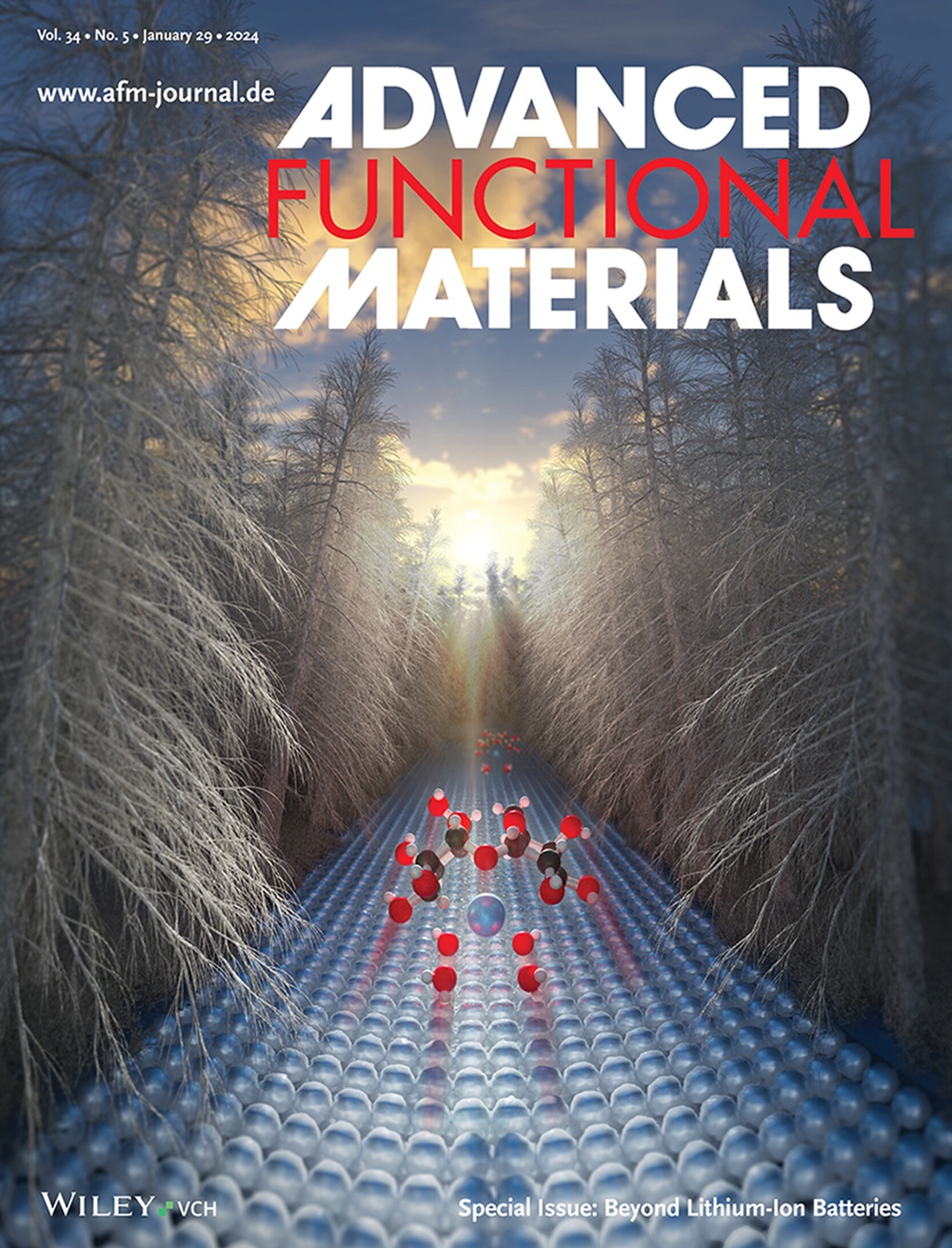Facet Engineering Modulates d-π* Hybridization for Boosting Antimicrobial Activity
IF 18.5
1区 材料科学
Q1 CHEMISTRY, MULTIDISCIPLINARY
引用次数: 0
Abstract
Reactive oxygen species (ROS) have been growing as an emerging “hot” topic in antimicrobial applications. However, optimizing antimicrobial activity by enhancing ROS generation remains a formidable challenge. Here, using bassanite as a proof of concept, the facet engineering of bassanite matrix can enhance the ROS generation efficiency via tuning the d-band center of Cu atom is proposed. Theoretical calculation and experimental investigations reveal that the d-band center of Cu atoms is significantly shifted upward when Cu doped into the (204) facet of bassanite compared to the (400) facet. A higher d-band center facilitates adsorption and activation between Cu and O2 through the formation of stronger d-π* orbital hybridization, resulting in increased ROS production. Through engineering, the material exhibits better antimicrobial activity when Cu doped into the (204) facet, which presents a clear potential in construction materials and personal protection. This work shed light on designing new materials with high antimicrobial activity and the application of facet engineering.

刻面工程调节 d-π* 杂交,增强抗菌活性
活性氧(ROS)已逐渐成为抗菌应用中的一个新兴 "热门 "话题。然而,通过增强 ROS 生成来优化抗菌活性仍然是一项艰巨的挑战。在此,我们以巴桑石为概念验证,提出了通过调整铜原子的 d 波段中心来提高 ROS 生成效率的巴桑石基体刻面工程。理论计算和实验研究表明,与(400)面相比,当铜掺杂到巴山石的(204)面时,铜原子的 d 带中心会明显上移。更高的 d 带中心通过形成更强的 d-π* 轨道杂化,促进了 Cu 和 O2 之间的吸附和活化,从而增加了 ROS 的产生。通过工程设计,当 Cu 掺杂到 (204) 面时,该材料表现出更好的抗菌活性,在建筑材料和个人防护方面具有明显的潜力。这项工作为设计具有高抗菌活性的新材料以及面工程的应用提供了启示。
本文章由计算机程序翻译,如有差异,请以英文原文为准。
求助全文
约1分钟内获得全文
求助全文
来源期刊

Advanced Functional Materials
工程技术-材料科学:综合
CiteScore
29.50
自引率
4.20%
发文量
2086
审稿时长
2.1 months
期刊介绍:
Firmly established as a top-tier materials science journal, Advanced Functional Materials reports breakthrough research in all aspects of materials science, including nanotechnology, chemistry, physics, and biology every week.
Advanced Functional Materials is known for its rapid and fair peer review, quality content, and high impact, making it the first choice of the international materials science community.
 求助内容:
求助内容: 应助结果提醒方式:
应助结果提醒方式:


